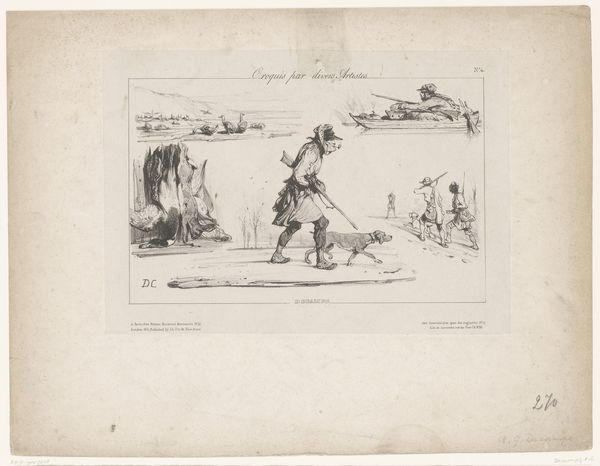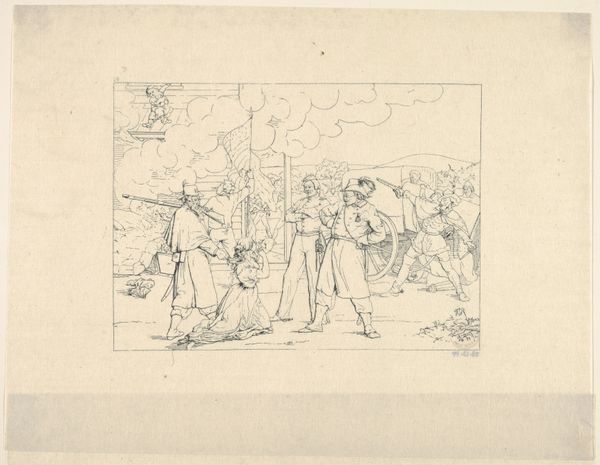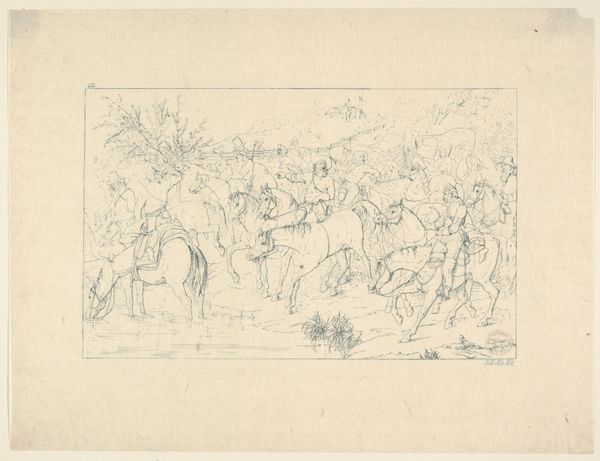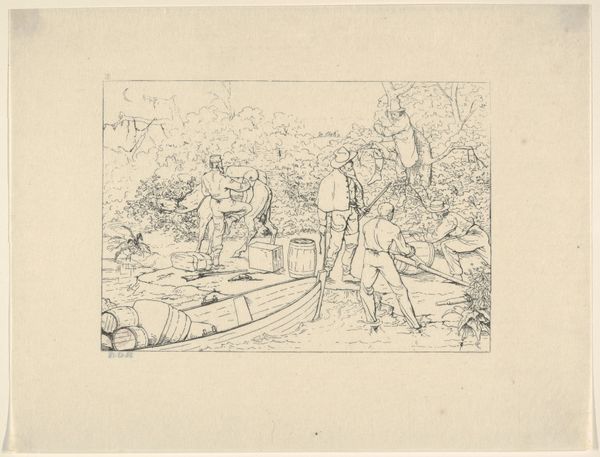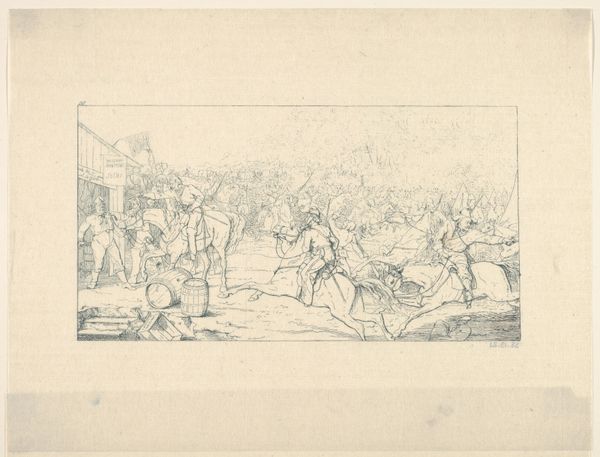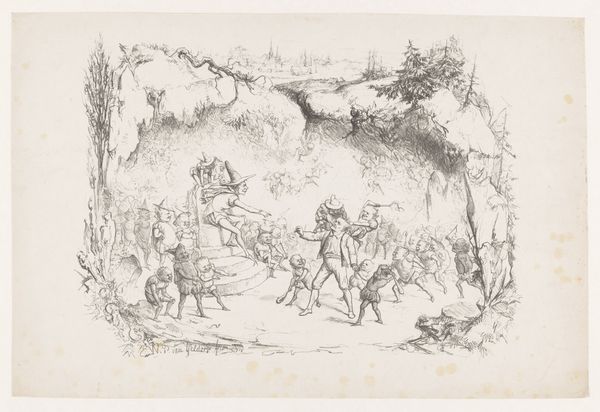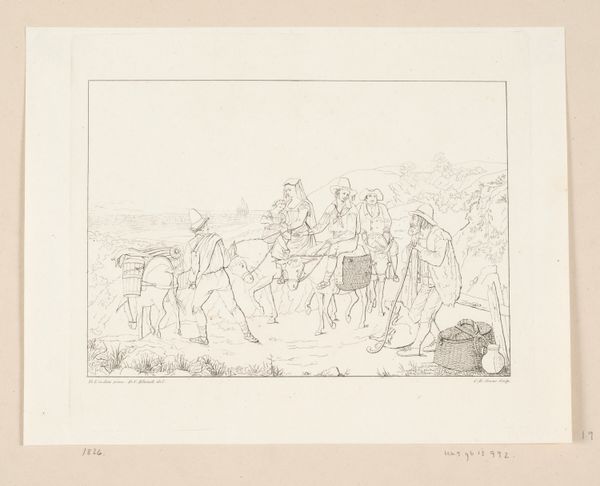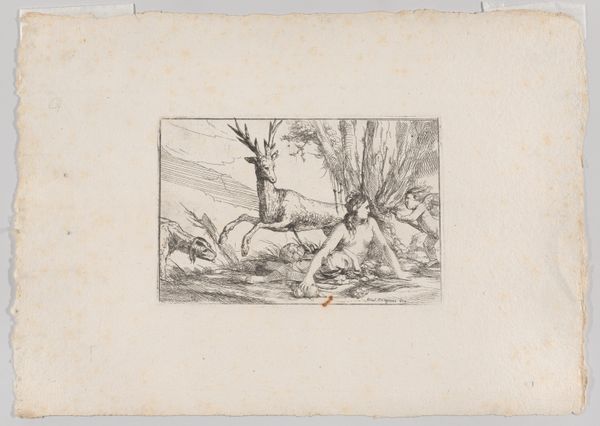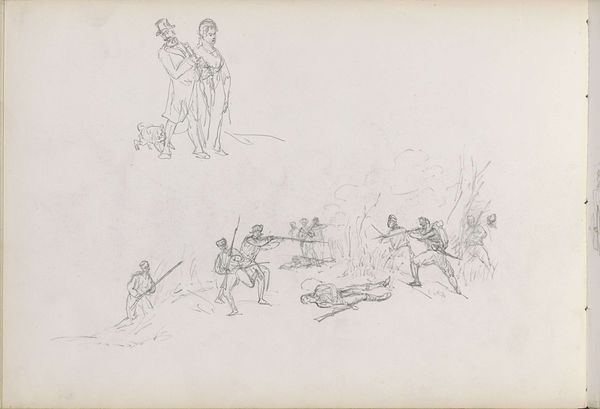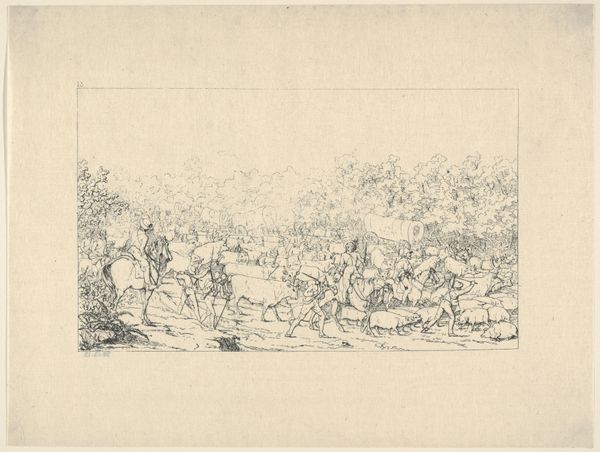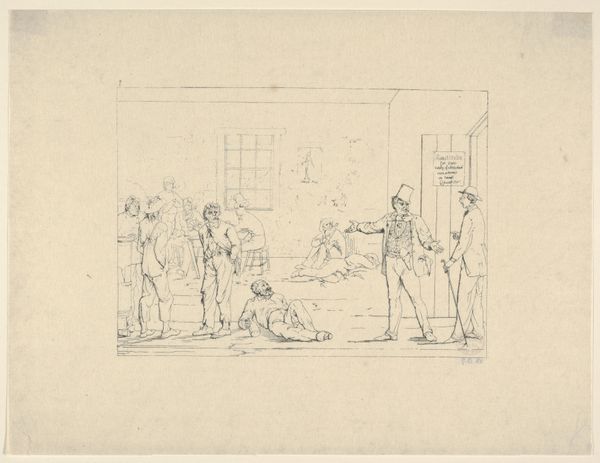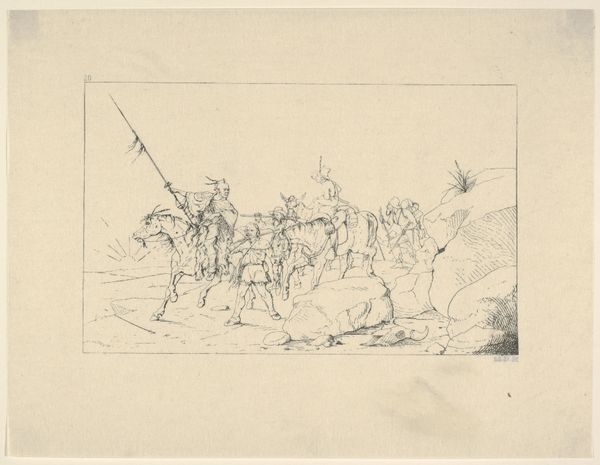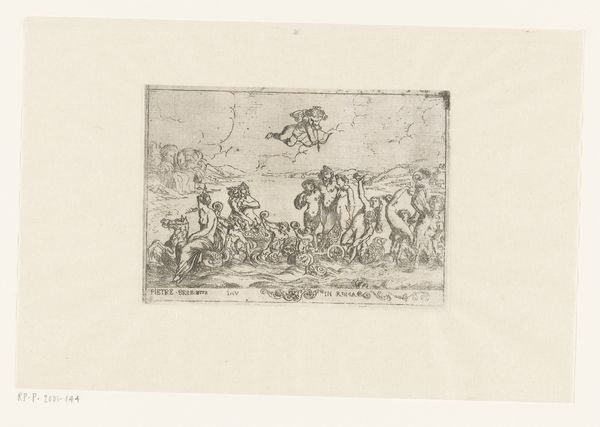
Formation of Guerrilla Bands (from Confederate War Etchings) 1861 - 1863
0:00
0:00
drawing, print, etching
#
drawing
# print
#
etching
#
war
#
landscape
#
soldier
#
men
#
line
#
history-painting
Dimensions: Image: 4 5/8 x 6 5/8 in. (11.8 x 16.8 cm) Sheet: 7 13/16 x 6 1/2 in. (19.8 x 16.5 cm)
Copyright: Public Domain
Curator: My first impression? It’s nervous, hurried, caught in a moment of frantic energy…almost desperate. Like charcoal smoke blown across paper. Editor: Fitting, given we’re looking at "Formation of Guerrilla Bands," an etching by Adalbert John Volck. It was produced between 1861 and 1863, during the American Civil War. Curator: Guerrilla warfare... that makes the chaos even more palpable. I’m drawn to the lower-left corner; this woman and child sitting amongst what looks like bombed rubble, it seems to speak volumes. The soldiers appear to pay no attention. Editor: Volck was a staunch Confederate sympathizer. These etchings, part of his "Confederate War Etchings", weren't created to document reality impartially. They aimed to bolster Confederate morale and demonize the Union. We can see how war inflicts collateral damage upon women and children and destroys the landscape. It speaks of displacement and violence. Curator: It is a propaganda image! Looking closely at the lines, there's such an odd contrast, I think. Like you said, the composition conveys urgency, action, men running and getting into formation with haste, but his lines are oddly delicate for such a violent subject. Look at the spindly trees and the scratchy, thin rendering of the landscape… Editor: Propaganda isn't always about brute force. Sometimes, the most effective approach involves crafting a narrative that pulls at heartstrings or triggers very specific ideas about the glory of war. Volck's work definitely walks a strange line: he glamorizes violence. The formal attire of the armed men in the centre, juxtaposed with this depiction of domestic distress, further complicates any simple interpretation of his intentions. Curator: He’s romanticizing war. All the figures have a certain elegance. Maybe, he wanted to make this horrific event look noble. Still, even through his skewed Confederate lens, the sense of anxiety and disruption bleeds through. Editor: Absolutely, and even knowing Volck’s clear bias, art can often betray more than the artist intends to show. The visual tensions, that blend of delicacy and urgency that you picked up on, I think those speak to war's psychological toll. Curator: That's a sentiment that cuts through any political divide, really. Thanks for providing such valuable historical context for this interesting etching. Editor: My pleasure. Considering this piece, it underscores how crucial it is for us to keep engaging critically with historical narratives, and the art they produce, with nuance and empathy, always mindful of their political roots.
Comments
No comments
Be the first to comment and join the conversation on the ultimate creative platform.
